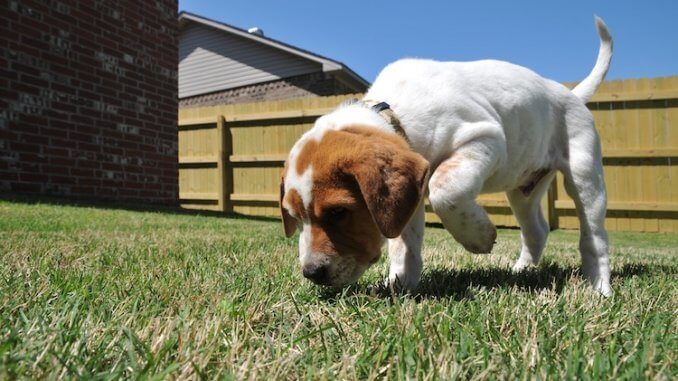
The idea of dog socialization is to introduce your puppy to what the ever-changing world has to offer, in order for him to survive, thrive and adapt to new environments and circumstances.
Just like humans, when your dog experiences something new, his brain is stimulated and a connection is made.
The more the same experience is revisited, the stronger the connection becomes. Similarly, if the experience isn’t revisited, the connection weakens and eventually dies.
Studies have shown that when an experience is emotionally charged, sensitivity in the brain increases which makes the experience memorable. This is great when we apply this to how dogs learn (i.e. operant conditioning), but, not great if our dog is scared or stressed during these experiences.
It is well established that poorly socialized pooches are more likely to develop problematic behaviors later on in life.
When we consider all of this, we can see how important socialization is and the need to do it right. But what is right? And what should you be doing as a responsible dog owner?
We’ve put together this handy guide to help you on your way to raising a well-socialized and stable dog.
Development Stages in a Dog
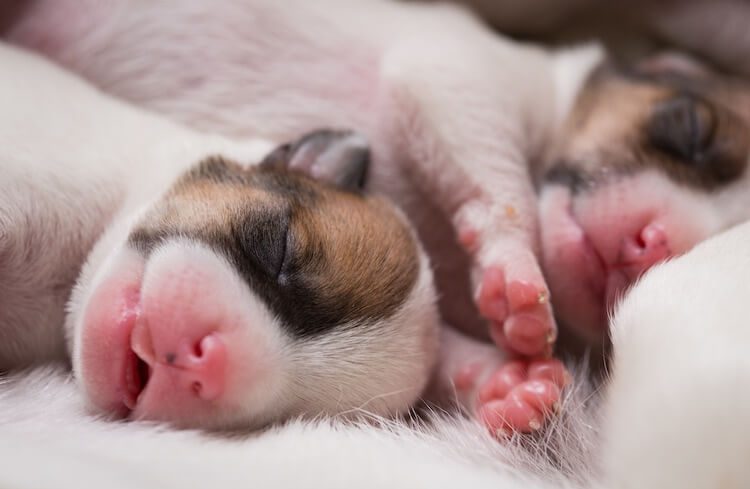
We may decide to go all gung-ho on socialization in an attempt to avoid future problematic behaviors. However, the reality is, just like humans, dogs have developmental stages and there are times in their life where certain experiences are more beneficial than others (just like you wouldn’t teach a five year old child to drive a car!).
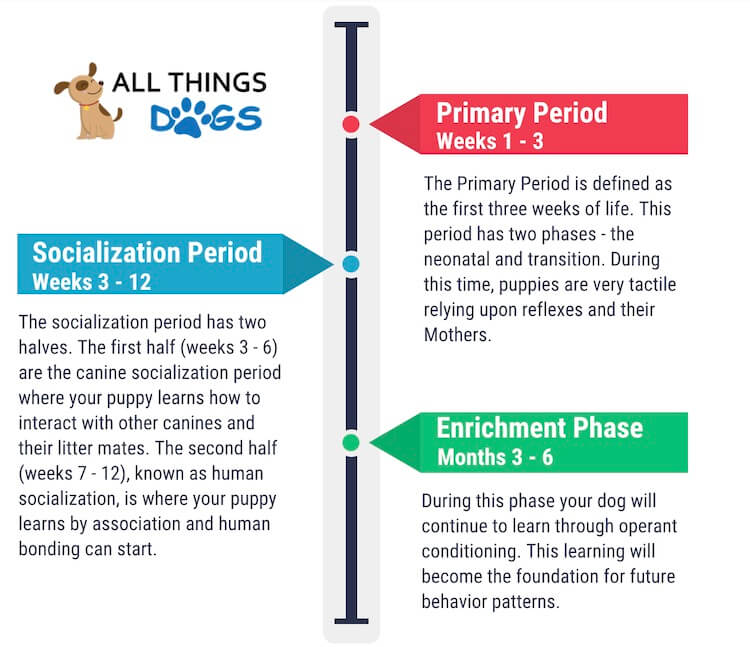
Primary Period – First Three Weeks
The primary period is defined as the first three weeks of life, which encompasses the neonatal and transition period. During this time, puppies are very tactile. The first two weeks start with the neonatal period where a puppy only has his core reflexes and will respond to heat, touch and smell.
After the neonatal period, the transition period will being to start. This is where your puppy’s eyes and ears open and they develop some control over body functions.
Their sensory capabilities aren’t fully functional, so they rely on their Mother, a lot. Studies have shown that early handling during this phase leads to much calmer puppies later in life and they are more resilient to stressful situations. Another reason finding a reputable breeder is so important.
Socialization Period – Weeks 3 to 12
Towards the end of the primary period, the mother starts to withhold care from her puppies, which encourages them to focus more on interactions with their littermates. This is known as the socialization period and lasts for between 3-12 weeks.
The first week within the socialization period is known as the awareness period; their sight and hearing is now developed which encourages lots of new sensory experiences.
During this time puppies are generally wary of human interaction, but this does diminish the more they experience positive interactions.
The socialization period has two different halves:
- The first half, from weeks three to six are known as canine socialization where your puppy learns how to interact with other canines.
- The second half, from weeks 7 to 12 are known as human socialization where your puppy learns by association and the bond between man and canine starts.
At around five weeks old, puppies tend to develop their fear response. They show significant distress at loud noises and in unfamiliar environments. They soon figure out which stimuli is dangerous, and which is harmless.
Interestingly, studies have shown that certain breeds develop this fear response much earlier; beagles and some terriers have been known to demonstrate this response at around 3 weeks of age.
Once their fear response is developed, they undertake a final period within the socialization period known as fear impact (from weeks 8-10). During this time stressful experiences should be avoided as trauma can be permanent.
Enrichment Phase Month Three to Six
Moving on from this, we come to the enrichment or juvenile phase. This is known to last until at least sexual maturity, which of course depends on the breed of dog, but is generally thought to be around 6 months of age.
It is believed that experiences during this phase have a crucial impact on later life behavior; to the extent their can predict temperament at 12 months of age. There really is a sensitivity during this period for traumatic effects such as being frightened by a person or being threatened or attacked by another dog.
You’ll be forgiven for wondering if no experience is better than negative experience. But studies have shown that lack of desensitization (socialization experiences) actually leads to less resilient dogs later in life too.
Appropriate socialization involves exposing your puppy to a variety of novel people, animals, places and situations without causing him to become scared or stressed during these experiences. The goal is for them to have experienced all of the real-world situations your puppy will encounter as a mature dog.
The key is finding the balance throughout these various phases and controlling the situation. So how do we do it?
How to Socialize a Puppy
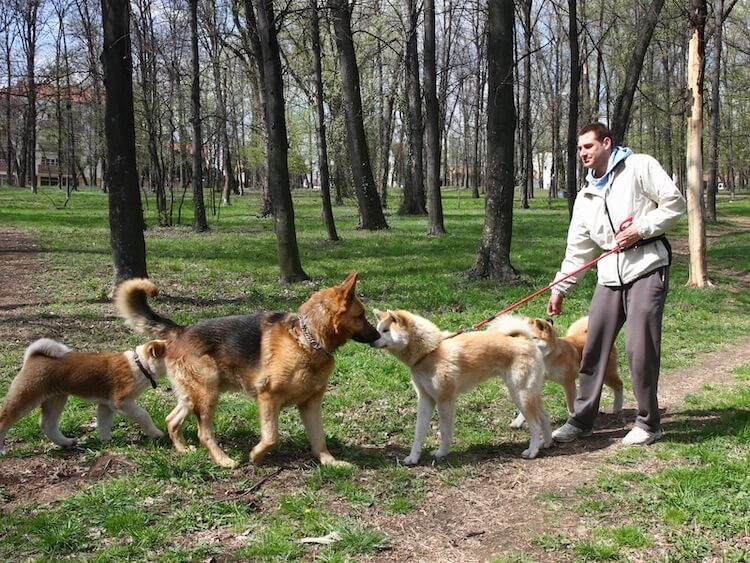
Socialization is introducing your puppy to what the world has to offer, in a safe and controlled way. It is allowing him to experience and learn as he needs to figure out what is safe and what poses a threat. It is in those critical periods that he will do most of his learning.
As we have mentioned, when a puppy encounters something or someone, their brain is stimulated which makes a connection.
If it is a positive experience, it is more memorable. Likewise, if it is traumatic it is more memorable. The bonus is, these connections can be strengthened or weakened.
Examples
- Your puppy learns that the neighbor two doors down always gives him a treat when he walks past. That connection is strengthened every time she gives him a treat and he adores her for it!
- Likewise, studies have shown dogs who have experienced thunder or storms under the age of 4 months old are more likely to have a fear of thunder as adults.
- Equally, dogs who hadn’t experienced human play before the age of 1, were unable to play as adults.
Not surprisingly, it has also been found that dogs raised in barns or sheds in their first 6 months of life, are more likely to become fearful and aggressive when older due to the lack of human interaction.
With all this going on in your puppy’s brain, it is crucial to not over-stimulate him. Although there isn’t a general rule of thumb of how many new experiences to introduce at any one time, socialization needs to be done gradually over a sustained period of time.
Watch his body language to see how he is coping with the situation. If there are signs that he is stressed, you will need to remove him from the situation. It is well established that dogs under chronic stress are incapable of higher-level learning, so you’re not achieving anything keeping him there.
Now we know why we do it, let’s see how we do it!
Dog Socialization Practical Step-by-Step Plan
A reputable breeder will keep a puppy with its mother until it’s at least 8 weeks old. This means that you will miss some of his socialization periods such as the primary period. You also miss the time he develops his fear response.
Speak with the puppy’s breeder to see what their socialization plan consists of before he leaves. This will give you a good place to start.
Generally, you will have pup towards the end of his key socialization period, that one which runs from 3-12 weeks. With vaccination schedules you may be limited to how much socializing you can do with pup when you bring him home. But, this doesn’t mean you can’t introduce him to things around the home, or carry him to new places.
During Weeks 8-12 Your Dog Should Have Experienced
- Bicycles
- Skateboards
- Door bells
- Knocking on doors
- Vacuum cleaner
- Alarms
- Umbrellas
- Touching different surfaces such as concrete, grass, sand, carpet, wood and asphalt
- Touch his paws, muzzle, ears (this will be vital for regular grooming)
- Check his collar, attach a leash, check between his pads and start introducing teeth brushing
- Meet people with beards, hats, sunglasses and big coats
- Meet children of all ages. Just because he accepts a teenager don’t assume he’ll accept a toddler.
- Let him experience humans laughing loudly or shouting between rooms
Week 12 Onwards (once vaccinations allow) Your Dog Should Have Experienced
- Meet people on the street – men, women, children and the elderly. Encourage him to ignore and just keep walking. Not everyone wants a puppy jumping at their knee
- If possible, introduce to people using crutches or wheelchairs (motorized and manual)
- Introduce to animals where possible – puppies, male dogs, female dogs, cats, kittens, horses, cows, sheep, chickens and ducks
- Car horns
- Traffic
- Shopping malls
- Crowds of people
- Airplanes
- Skateboards/bicycles on the street
- Loud cars
- Motorbikes
- Parking lots
- Trucks
- Trains
The aim isn’t to experience all of these things at once, it would be most human’s worst nightmare, never mind a new puppy who is learning. You may experience one new thing each walk, you may experience one new thing per week as he gets older.
When you are taking him to explore, it is important that you stay calm. Dog’s pick up on our emotions. Whether they are positive or negative. If your pup senses that loud motorbike is nothing to fear, he won’t.
Keep him on leash during socialization, just in case he sets to chase or decides to run away.
In a relaxed manner walk up to the trigger or experience. Allow them to sniff and explore before calmly calling him away. You’re aim is for your dog to remain interested but indifferent.
Top-Tip
If he shows signs of stress or worry, then remove him from the situation and try again another day (bring treats next time to counter the response).
If he is highly-aroused or super-excited, again remove him from the situation. Next time distract with treats around the trigger or experience, so your dog learns to show less interest. Your aim with any experience is an eventual calm and relaxed response.
Be mindful that he is still a puppy, he’ll also tell you when he’s done too much. Stressed dogs can become highly aroused; appearing to never shut off. In this instance, walk some regular routes, ones that he’s not particularly alert on until he’s in a calmer state.
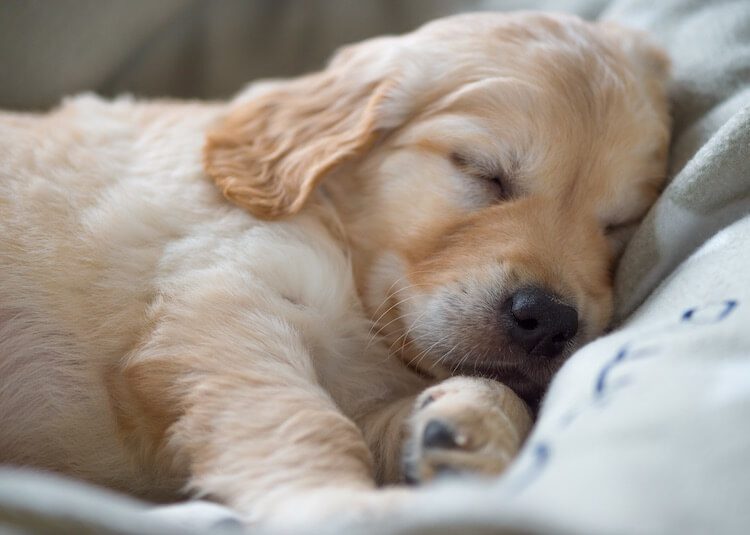
Although we’ve commented on socialization during puppyhood, the reality is, it never truly stops. We know that there are crucial periods where experiences are more beneficial, but no dog owner should get to 6 months old and stop the training.
How to Socialize a Dog

Fully matured dogs will still have new experiences, it is the nature of the ever-changing world we live in. Owners should treat these experiences in much the same way as you would when they were a puppy. Safe and controlled, watching their body language for signs that he is stressed.
The difference is, if we are taking on an older dog, and we are unsure of their history (e.g. a shelter dog), your dog has likely made a lot of connections in that brain of his. Some good, some bad. He may have developed fears or phobias thanks to negative experiences, or, simply lack of socialization during critical periods.
Here, the key is desensitization and then counter-conditioning.
Just like humans, dogs also have the typical fight, flight or freeze response. In a stressful situation, they will either display signs of aggression, run away or tuck their tail under, cower away and make themselves small.
Whatever the trigger may be, you can desensitize. This means exposing your dog to the stressful situation at a level below that which triggers his fear/stress response. If this is other dogs, you may find that he copes when they are the opposite side of the park to him. Through counter-conditioning, you would slowly reduce the distance between him and the other dog whilst praising and rewarding him; enabling him to make a new, positive association with other dogs.
This can apply to any situation that Fido finds stressful or worrisome. Patience is key.
If you have concerns about your dog’s aggressive behavior, please seek the advice of a qualified behaviorist.
Not only do older dogs show learned responses, you may also find that they simply just haven’t experienced situations. It is worthwhile working through the socialization checklist to establish where Fido is at currently and it gives you an understanding of what you can work on. Again, slowly and not over-stimulating him.
A successful interaction would result in a calm and relaxed response. Anything showing over-arousal needs more work. You can start with the checklist below:
A Mature Dog Socialization / Rehabilitation Checklist
- Checking over the body; ears, eyes, mouth, handling
- Holding collar
- Attaching leash
- Meeting men
- Meeting women
- Meeting children of all ages
- People wearing backpacks
- People wearing hats
- People wearing coats
- People with canes or crutches
- Meeting sociable dogs
- Being around reactive dogs
- Meeting cats/kittens
- Meeting livestock
- Surfaces; concrete, grass, asphalt, wood, marble
- Thunder
- Storms
- Fireworks
- Alarms
- Vacuums
- Sirens
- Skateboards
- Bicycles
- Rollerblades
- Garbage cans
- Baby strollers
- Shopping carts
- Cars
- Buses
- Motorcycles
- Trains
- Pots and pans
- Brooms
- Umbrellas
- Sidewalk signs
- Plastic bags
- City streets
- Shopping malls
- Parking lots
Summary
Socialization is a huge part of a dog’s life and is one of the most demanding parts of dog ownership.
It is crucial to raising a well-rounded and stable dog that everyone desires.
Lack of socialization has been linked to problematic behaviors in older dogs, especially when those crucial periods are missed! We have highlighted the importance of those early weeks, which shows why finding a reputable breeder is so important when finding your puppy.
Despite this, if you find yourself giving an older shelter dog a second chance, don’t be disheartened. It is possible to help him make new, positive connections in that brain of his through desensitization and counter-conditioning.
Use the socialization checklist as a starting point, don’t over-do it, stay calm and let us know where your experiences end up taking you.

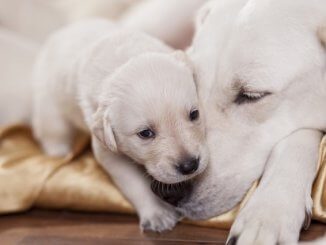
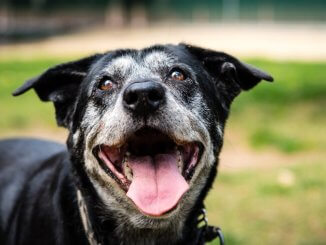
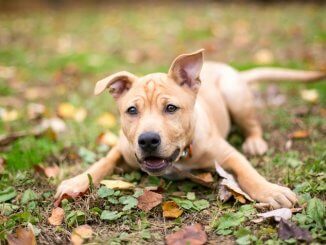
I have read several articles on socialization. More words are used on conditioning dogs to situations when interacting with humans, rather than socializing with other dogs. Pure positive training methods also lack the preferred type of correction used on dogs that don’t listen, dogs that are reactive towards other dogs.
I feel that it is an unreasonable expectation to raise a completely non reactive dog, what do you think?
How to get a 1 year old dog to stop chewing on my blanket
My shelter borador not only has severe separation anxiety, but is so territorial and protective over me that she snaps and lunges at strangers who enter our home. She especially does not like men, it took her a few weeks to adjust to my husband (but after he died she went into super protection mode).This is a problem because I have various health care people in and out. How can I stop her aggressive behavior?
Hi Cathy, thanks for your question. Unfortunately, with the amount of people coming in and out of your home, we would advise you seek professional help. We are assuming the health care professionals are a necessary part of your life? Which means you are unable to remove the triggers for your Borador. A big part of working with complex dogs is to first remove the triggers that cause the negative emotional state and slowly work on counter-conditioning. Depending on where you live, these are grounds enough to get law enforcement involved. Please seek the advice of a local force-free behaviourist so they can assess your dog fully and help you figure out the next steps.
Getting a puppy during covid 19. I am concerned about socializing. We can do noise, wear different cloths… but not people and animals. Not can we take her to malls, outdoor events ect. Will she be okay?
Getting a puppy is a challenging time even in the absence of COVID-19. You really can only do your best. Work through our socialization tips as best you can and try to expose your puppy to experiences whenever you are able to head out for your exercise. You Tube has a great selection of filmed dog walks which may be helpful exposing the puppy to new places, likewise they have a range of videos of different noises etc. If possible, videocall friends and family so your puppy can be exposed to new voices and sounds from their homes. If you know anyone with kids, videocall them too as it’s great to have exposure to a range of ages. Just try your best, your puppy will be fine.
My 6 month old puppy constantly chases my older cats – how do I get her to leave them alone and just co-exist? I use the ‘leave it’ command, spray water, distraction, and nothing works for long. At night, everyone cuddles up to me just fine – cats on one side and puppy on the other! But during the daylight, they are fighting each other terribly. Would love some suggestions or just continue with what I am doing and she will just grow out of it?